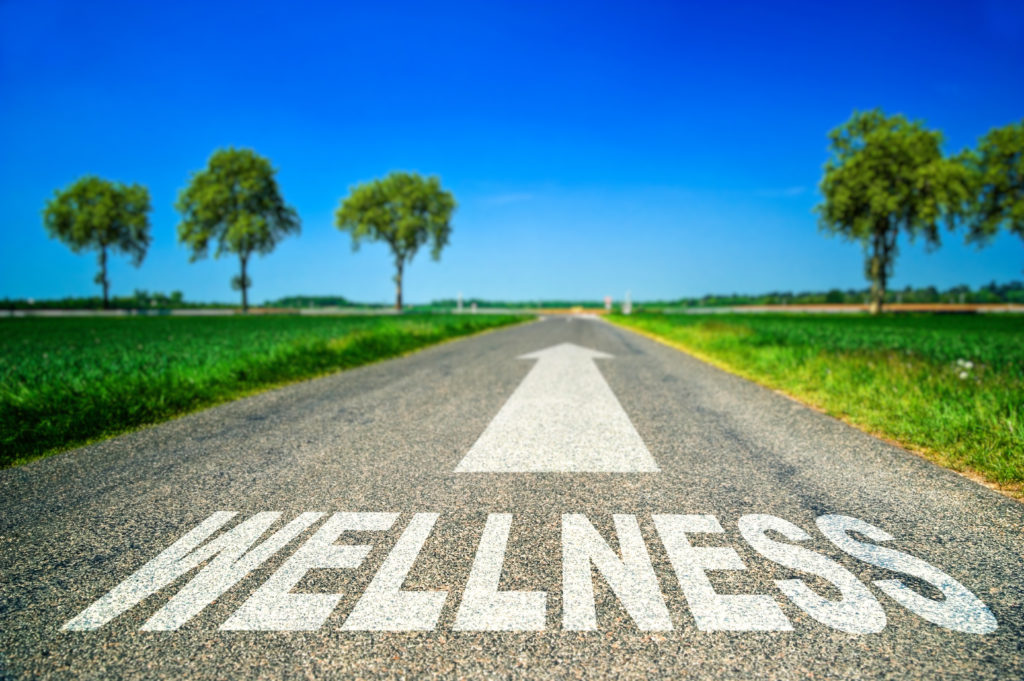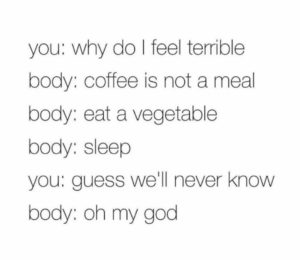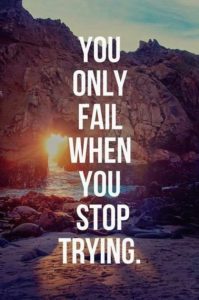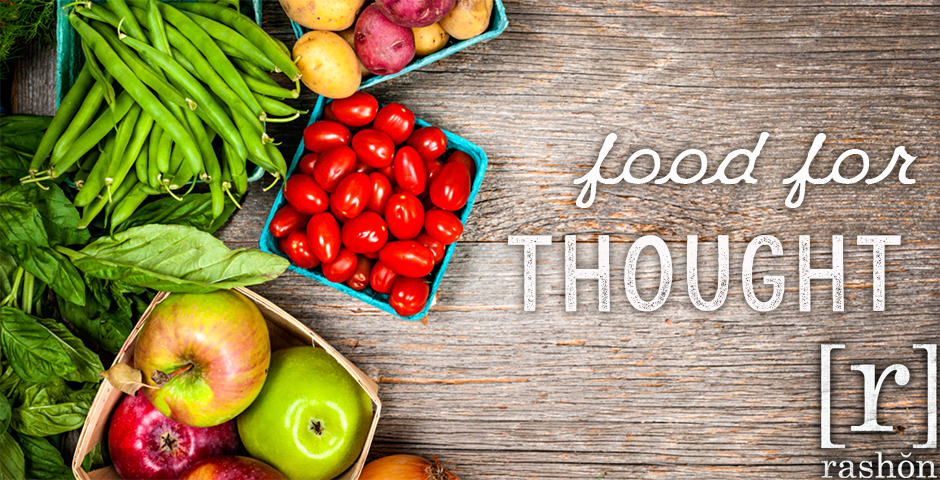Hi, everyone! So, this objective is actually a repeat; however, it’s among the most important things we can do when we’re trying to live a healthier lifestyle. Really, it’s the foundation for a healthy lifestyle. The last several weeks have been very trying personally, and I found myself needing this reminder. I think it’s something we all need to revisit now and then.
Objective #9: Change Your Mindset AGAIN! 🙂
I know, I know…this objective seems vague, but as we move forward with the Practical Guide to Wellness, it’s going to be really important. How we think about food and wellness has a big impact on our success in healthier living. Following a super strict food plan or diet can lead to weight loss and feeling better, but it’s oftentimes hard to maintain over the long term leading to gaining weight back, feeling bad about yourself or even just losing motivation to live a healthy lifestyle. (Note: Some health conditions can require eating/omitting specific foods, and adhering to that to the letter in order to…well…live. I’m not necessarily speaking to that here, although, mindset still plays a role in that case. I’m talking about general, healthy living and meeting your own health goals.)
In our next several objectives, we’ll be talking about some things that are good to avoid, and some things you may want to add in to your diet and lifestyle. As we move forward, I want to set you up for success. With this objective, you’re putting yourself on the right path towards wellness. I want you to have the right mindset – for yourself – to live a vibrant, healthy life. 
The Basics
- Have a clear idea of your personal health goals. Maybe you just want to feel better and have more energy in general. Maybe you have a certain amount of weight to lose. Maybe you’re dealing with specific health conditions, and understand that what you’re eating may be exacerbating those health issues. Maybe you want to get better sleep. Maybe you want to free yourself from the roller coaster of diets. Whatever the case may be, know what it is you want for your own health.
- Understand that there are some foods you should avoid. This is true for everyone, no matter your health and fitness levels, and we’ll be talking more about those in the weeks to come.
- We have a lot of emotions tied up in our food. This is part of our culture as humans. We associate certain foods with celebrations and holidays, or we eat certain foods when we’re stressed or upset. We look to food for comfort, or as a symbol of happiness at a party, but we often forget what food actually is. Food is meant to be nourishment for our bodies. Period. I know that sounds pretty harsh, but it’s the truth. This is what I want you to hear, though: I’m not saying you shouldn’t enjoy food, or that food shouldn’t taste good, or even that you shouldn’t have a piece of birthday cake or those rum balls at Christmas (<— I threw that one in there for me). I’m simply saying that we need to remember the actual purpose of eating. Food is meant to nourish and fuel our bodies. When we remember that, it helps us to make better decisions – in the moment – about what we want to put in our bodies.
- There is balance to be found in choosing the right things to eat for your body, and still living life and enjoying all the big and small moments. Finding what works for your body – that sweet spot where you’re feeling good and meeting your health goals, while still feeling like you can live your life – is how you make vibrant living and good health sustainable for the long term.
Your Objective: For the next month, work on changing your mindset around food.
Don’t worry. I’m not going to leave you hanging with just that statement. There are some specific things I want you to work on during the next several weeks that will help you change the way you think about food.
Action Steps
- Be mindful about what you’re eating. What does that mean? It means pay attention to what you’re eating. Many of us get in the habit of snacking throughout the day, or picking at food on our kids’ plates – basically the hit and run mode of eating/snacking. Start being aware of the foods you are choosing to eat. When you start paying more attention to this, you’ll be amazed at what you’re actually eating during the day without even realizing it/giving it much thought. Pay attention to how your body feels when you eat certain foods as well. Take note of what makes you feel good, and what doesn’t.

- Sit down to eat – preferably not in front of the television. When we watch tv while we eat, we get distracted, and are no longer paying attention to our bodies’ cues that we’re getting full, so we end up overeating.
- Chew your food thoroughly, and eat slowly. It takes 20 minutes for our brains to receive the signal that our stomachs are full. How often do your meals take you 20+ minutes to eat? How often are you just shoveling food in your mouth, and you’re done in 5 minutes? Pay attention to this! Beyond not recognizing that you’re actually full, which makes you overeat, your body is also going to have a hard time digesting the food properly. Digestion starts with thorough chewing, and beyond that, when you eat super fast, it overwhelms your digestive system. Eating fast and not chewing your food thoroughly, can cause indigestion, acid reflux, malabsorption of nutrients and a host of other digestive issues!
- Realize that every time you eat is an opportunity to nourish or deplete your body. If you eat a meal or snack that’s not so great, the very next meal is an opportunity to nourish your body again. When I say deplete, I’m talking about those foods that can actually cause health issues and literally deplete your body of vitamins, minerals, energy, etc. (more to come on this in future posts) Choose your food wisely! When faced with a food choice, think about these things:
- What are my health goals?
- Will this food nourish my body or deplete my body?
- Am I really hungry or just looking to feed a craving?
- Is there a better choice that will fill me up?
- Can I have a bite or two of this treat, and walk away satisfied, but not totally blow up my goals?
- If I eat this, will it send me into a tailspin of other poor choices (cravings)? (This happens to all of us sometimes! It’s how our bodies work.)

- Reframe the situation. For example, if you’re at work, and someone brings in donuts, do you automatically have a donut because it’s there, and it’s donut day? Ask yourself those questions above, then try telling yourself this: “I ate breakfast before I got to work today. Those donuts look so good, but I’m not really hungry. I think I’ll skip the donut for now because I have a car and my own money, and if I really want a donut later, I’ll drive and get myself one.” This is just one, perhaps sort of lame, example. There are a thousand situations that could arise, and a thousand ways you can reframe that situation in your mind. Remember, you are in control of what you eat, and for the most part, you can get yourself whatever you want, whenever you want. You don’t really have to indulge in something right then because it’s in front of you. Give the power back to yourself!
One of the main things I want you to remember as we move forward is this: You don’t cheat with food. You eat food. That’s it. Some foods are better for you than others, and some foods have greater consequences when it comes to your health.
I don’t buy into cheat days or cheat foods. When you do this, it creates an unhealthy relationship between you and your food. It leads to you feeling bad about yourself, which typically leads to more bad food choices. Drop this cheat food business from your vocabulary. If you want ice cream, and you choose to eat it, you know that it will spike your blood sugar, and it may lead to some cravings, or some weight gain, or maybe leave you feeling not so great after a day of healthier eating. At the same time, it might be a satisfying treat for you, leave you feeling happy or make you feel like part of a celebration. Either way, there are consequences to it, and guess what? It’s your choice to eat it or not, and you get to choose what you want to give your body at any given time. It’s not cheating, it’s eating. End of story.
Whew. I’ll step down off my soapbox now.
Okay, so now that you have your action steps, you’re ready to face not only the next few weeks, but all of the future steps you’ll take in your personal journey to wellness and healthier living! Establishing a mindful approach to eating, reframing your thinking about food, and realizing YOU have the power to nourish your body or deplete it with your food choices, are the keys to finding a way of healthier eating that is sustainable for you long term.
I want to be clear that there is a balance to be found in eating healthy and meeting your health goals, while also enjoying life. That is going to look different for each person – we’re all unique in what our bodies need. It can sometimes take a lot of trial and error to figure out what works for your body. If you feel like you need extra help, let’s work together one-on-one to address your specific needs. Send me an email or fill out the contact form. I’d love to hear from you!
Keep in mind that we have a lifetime of eating habits, along with our own personal relationship with food. I don’t expect you to just have a whole new mindset in a month. It’s going to take some time to make these changes, but this objective gives you a timeframe in which to really focus on these things.
Over the next couple of weeks, I will be posting some additional resources in the Facebook group. Just click through to ask to join. Also be sure to sign up for the Practical Guide to Wellness email list.
Follow me on Facebook, Instagram and Twitter over the next two weeks for additional info to help keep you on track and working towards your goal!
Tell me: Are you mindful about what you eat? Did you learn some new strategies in this post?
Disclaimer: The information provided on this website is for educational purposes only. It is not intended to treat or diagnose any health condition. Please consult a doctor, healthcare professional or a Nutrition Consultant for information specific to your health needs.





0 Comment